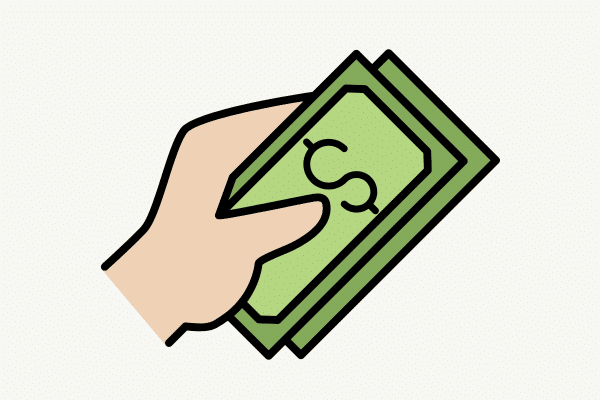
If you aren’t one of those lucky Americans who get a tax refund from the IRS, you might be wondering how to go about paying your balance due.
Here are some electronic and manual payment options that you can use to pay your federal income tax:
📌 Electronic Funds Withdrawal – You can pay using funds from your bank account when your tax return is e-filed. There is no charge by the IRS for using this payment method, and payment can be arranged by your tax return preparer, allowing for the e-filing of your return and submitting an electronic funds withdrawal request at the same time.
📌 Direct Pay – You can schedule and make a payment directly from your checking or savings account using IRS Direct Pay. There is no fee for this service, and you will receive an email notification when the funds have been withdrawn. Payments, including estimated tax payments, can be scheduled up to 30 days in advance. You can change or cancel the payment up to two business days before the scheduled payment date.
📌 Electronic Federal Tax Payment System – This is a more sophisticated version of the IRS’s Direct Pay that allows not only federal income tax but also employment, estimated, and excise tax payments to be made over the internet or by phone from your bank account. The system includes a robust authentication process to ensure the security of the site and your private information. This is a free service. Payments, which can be scheduled up to 365 days in advance, can be changed or canceled up to two days before the scheduled payment date. You can use IRS Form 9783 to enroll in the system or enroll at EFTPS.gov – but do so well in advance of the date when a payment is due, as the government will use U.S. mail to send you a personal identification number (PIN), which you will need to access your EFTPS account.
📌 Send a Check – You can also pay the old-fashioned way by sending in a check along with a payment voucher. The payment voucher – IRS Form 1040-V – includes the information needed to associate your payment with your IRS account. IRS addresses for where to send the payment and your check are included with Form 1040-V.
📌 Pay with Cash – Taxpayers without bank accounts or those who prefer to pay in cash can do so at participating 7-Eleven stores. Taxpayers can do this at more than 7,000 locations nationwide. Visit IRS.gov/paywithcash for instructions on how to pay with cash. There is a small charge for making a cash payment, and the maximum amount is $1,000 per payment. Don’t wait until the last minute, as it can take up to a week for the IRS to receive the cash payment.
Other options to consider:
The IRS also has a mobile app that allows taxpayers to pay with their mobile devices. The IRS2Go app can be used to pay with either Direct Pay or by debit or credit card. IRS2Go is the official mobile app of the IRS and is available for download from Google Play, the Apple App Store, or the Amazon App Store.
If you are unable to pay the taxes that you owe, it’s generally in your best interest to make other arrangements to obtain the funds needed to fully pay your taxes, so you aren’t subjected to the government’s penalties and interest. Here are a few options to consider when you don’t have the funds to pay all of your tax liability:
📌 Credit Card – Another option is to pay by credit card using one of the service providers that work with the IRS. However, since the IRS doesn’t cover the credit card discount fee, you’ll have to pay that fee. You’ll also be responsible for the credit card interest on the payment.
📌 Installment Agreement – If you owe the IRS, you may qualify for a streamlined installment agreement that allows you to make monthly payments for up to six years. You’ll still be subject to the late payment penalty, but it will be reduced by half. Interest will also be charged at the current rate, and you’ll have to pay a user fee to set up the payment plan. By signing up for this arrangement, you agree to keep all future years’ tax obligations current. If you miss payments or have an outstanding past-due amount in a future year, you’ll be in default of the agreement, and the IRS can take enforcement actions to collect the entire amount you owe. To seek an installment agreement, the IRS will need to validate your financial condition and your need for an installment agreement through the information you provide in the Collection Information Statement (in which you list your financial information). You may also pay down your balance to take advantage of the streamlined option.
📌 Tap a Retirement Account – This is possibly the worst option for obtaining funds to pay your taxes because it jeopardizes your retirement, and the distributions are generally taxable at the highest bracket, adding more taxes to the existing problem. Additionally, if you’re under age 59.5, such a withdrawal is also subject to a 10% early-withdrawal penalty, which compounds the problem even further.
📌 Family Loan – Although it may be uncomfortable to ask, obtaining a loan from a relative or friend is an option because this type of loan is generally the least costly in terms of interest.
💡Your Decision to Make
Whatever you decide, don’t ignore your tax liability, as that is the worst thing you can do, and it can only make matters worse.
Need a hand navigating your federal tax payment options this year?
Don’t stress—reach out to us today, and let’s get your IRS account squared away with ease. Make 2024 the year you stay ahead of the game!
